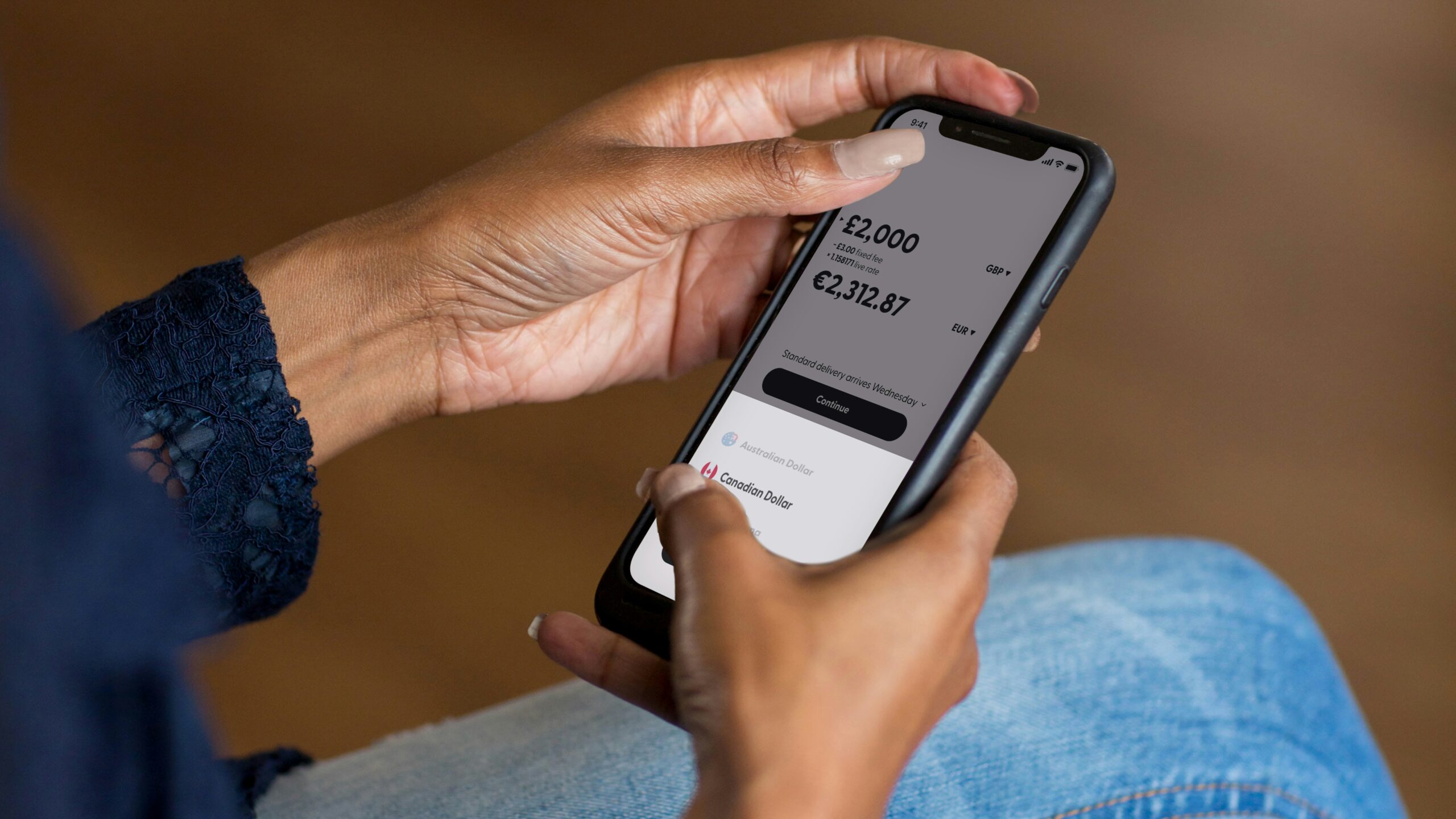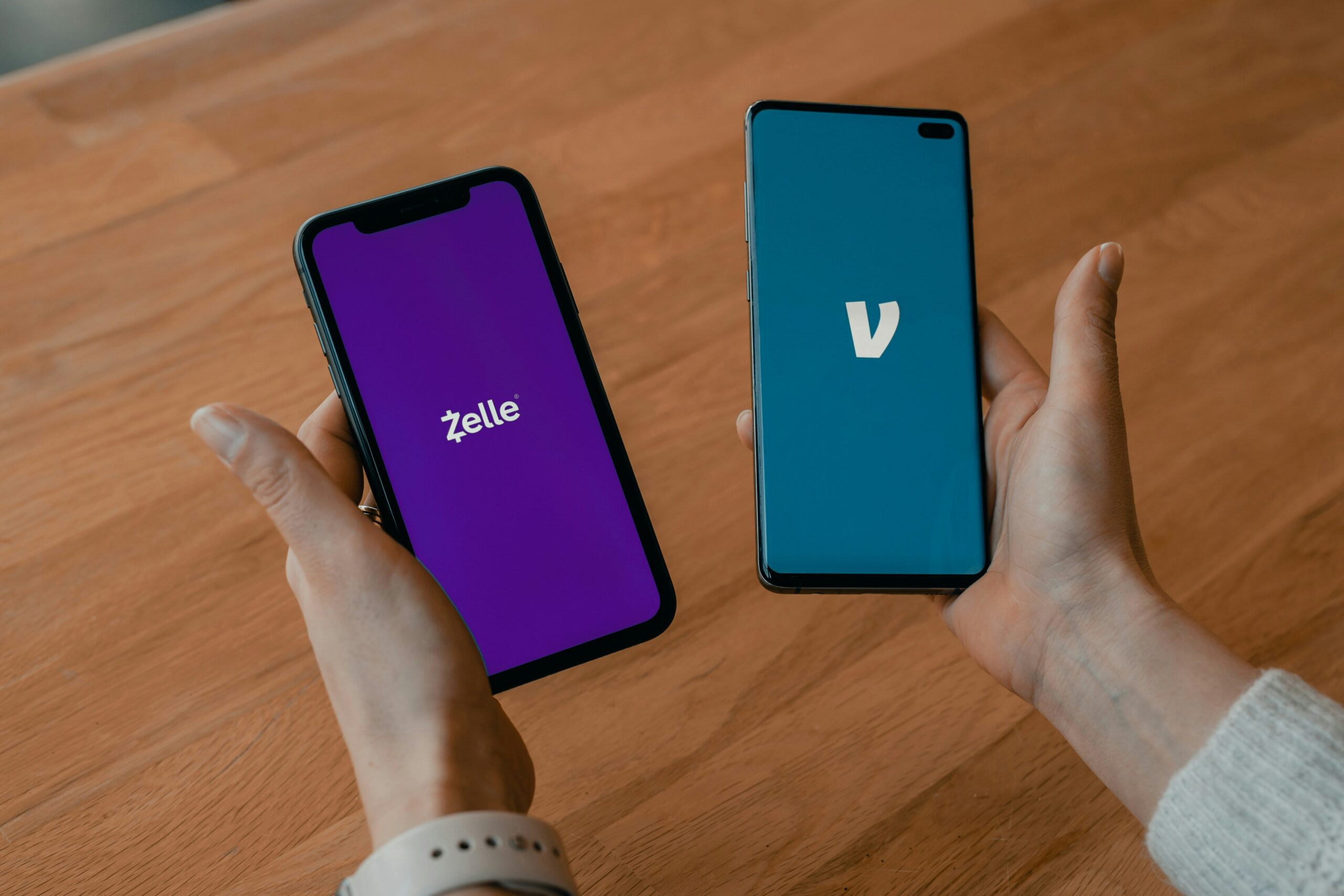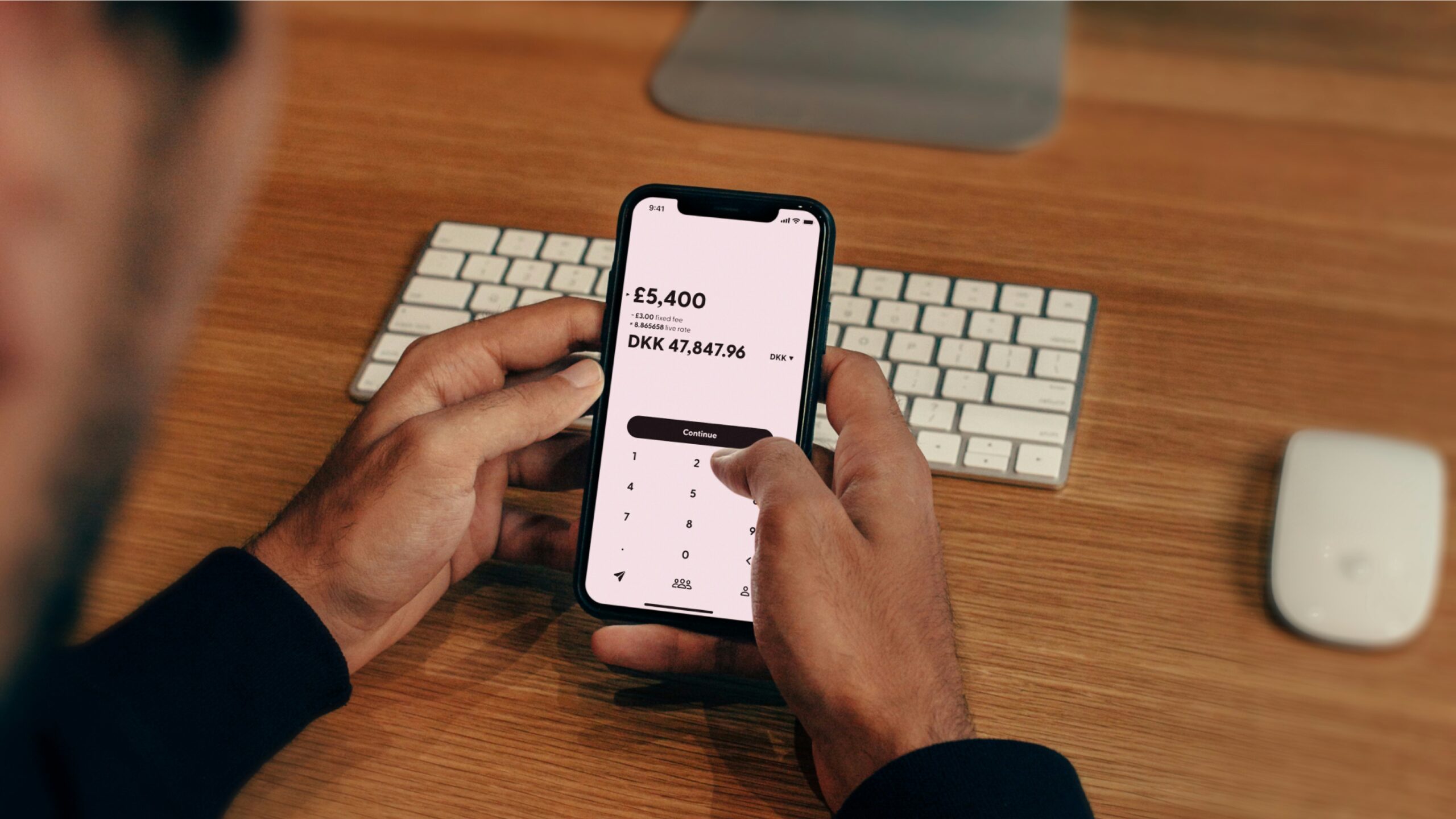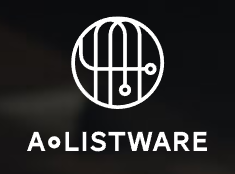Developing a money transfer app involves careful planning, essential features, and a strong focus on security. In this guide, we’ll walk you through the process of creating a successful app that meets user needs and industry standards. Whether you’re targeting personal users or businesses, this comprehensive overview will help you get started with your app development journey.

Why Create a Money Transfer App?
Before diving into the development process, it’s important to understand the factors driving the growth of money transfer apps. The global money transfer market is expanding rapidly, with over 281 million international migrants, many of whom rely on digital platforms to send money back home. This trend is reflected in the rapid growth of digital payment solutions, expected to reach $9.87 trillion by 2030.
Key drivers of money transfer app demand:
- Smartphone adoption: increased smartphone penetration makes mobile payments and transfers more accessible to users.
- Cross-border transactions: migrants and international workers are driving demand for quick, cost-effective money transfer solutions.
- Need for security and ease: digital money transfers are more secure and less cumbersome compared to traditional banking methods.
- Financial inclusion: people in underserved areas or without access to traditional banking can use these apps to send and receive money.
Given these factors, now is an ideal time to develop a money transfer app that addresses these needs and stands out in the competitive market.
Essential Features of a Money Transfer App
To succeed in the competitive fintech market, your app needs to offer essential features that prioritize ease of use, security, and functionality. These features will make the app both valuable and reliable for users:
- Real-time transaction notifications. A core feature of any money transfer app is real-time notifications. These alerts inform users of transaction activities, providing transparency and security.
- Multi-currency support. In a globalized world, multi-currency support is essential for international money transfers. Your app should allow users to send funds across borders in multiple currencies, with competitive exchange rates.
- Robust security measures. Security is paramount in any financial app. To protect users’ sensitive information and financial data, the app must incorporate robust security features such as data encryption, 2FA, and SSL.
- User-friendly interface. A clean, simple, and intuitive user interface (UI) will ensure that users of all technical abilities can navigate your app effortlessly. Consider user experience (UX) design principles to make the process of transferring money as easy as possible.
- Compliance with regulatory standards. Financial regulations such as AML (Anti-Money Laundering), KYC (Know Your Customer), and PCI DSS are critical in the money transfer industry.
- In-app payments and transfers. Allow users to send money using various payment methods such as bank transfers, card-to-card transfers, and P2P transfers.
- Transaction history and reporting. Providing users with detailed transaction history is crucial for transparency. It can also help with resolving disputes or errors in transfers.
Incorporating these features will ensure that your money transfer app stands out in the market, offering a secure, easy-to-use, and compliant solution for users’ financial needs.

5 Popular Money Transfer Apps to Inspire Your Development
When building a money transfer app, it can be helpful to look at successful apps in the market to understand what works and what features are most important to users. Here are five popular money transfer apps that have achieved widespread success, each offering unique features and services that you can draw inspiration from.
1. PayPal
PayPal is a leading global money transfer app that enables users to send money domestically and internationally, pay for goods and services, manage business transactions, and access features like PayPal Credit.
2. Cash App
Cash App is a popular mobile payment service that allows users to send and receive money quickly. It has gained significant popularity in the U.S. due to its simplicity and unique features.
3. Wise
Wise is a global money transfer service that provides affordable and fast international transfers with transparent fees. Wise is known for offering some of the best exchange rates and low transfer fees, making it a favorite for international money transfers.
4. Western Union
Western Union is one of the oldest and most established money transfer services globally. With both online and in-person options, it allows people to send money both domestically and internationally.
5. Revolut
Revolut is a digital banking app that provides users with financial services such as money transfers, spending management, and cryptocurrency trading. It is popular for its innovative features and competitive pricing.
Looking at these successful money transfer apps can give you valuable insights into the features and services that users value most.

Step-by-Step Guide to Building a Money Transfer App
Creating a money transfer app is a complex but rewarding process. Follow these steps to ensure your app is built to meet user expectations, deliver seamless transactions, and comply with legal requirements.
Step 1: Analyze Business Needs and Elicit Requirements
Begin with a clear understanding of your business goals and target market. This involves researching:
- Target audience: are you focusing on individuals, businesses, or both?
- תכונות עיקריות: what features will best serve your users (P2P transfers, bill payments, etc.)?
- Competitive analysis: what are your competitors offering, and where can your app stand out?
These steps ensure that the app you create is aligned with both user expectations and market opportunities, setting the stage for a successful development process.
Step 2: Create a Detailed Project Plan
Creating a detailed project plan is one of the most crucial steps in building a money transfer app. It sets the groundwork for the entire development process, providing clear direction, accountability, and structure. A well-constructed plan not only helps track progress but also allows you to efficiently allocate resources, manage risks, and ensure that the project stays within budget and on schedule.
Below are the critical components your project plan should include to maximize success:
- Development timeline: a clear and realistic timeline is essential to manage the entire project from start to finish. Break down the development into phases such as research, design, development, testing, and deployment.
- Budget estimate: a well-detailed budget is crucial for ensuring that the project stays financially viable throughout its lifecycle. The budget should cover not only the development phase but also marketing, ongoing maintenance, and scalability.
- Team roles: clearly defining team roles ensures that each team member knows their responsibilities and contributes effectively to the project’s success.
A detailed project plan not only keeps your team organized but also provides clear visibility of the timeline, budget, and roles throughout the development process. It enables you to manage expectations, avoid unnecessary delays, and ensure that the project is completed successfully.
Step 3: Design the App’s UI/UX
User experience (UX) and user interface (UI) design are fundamental to the success of any money transfer app. The design should be intuitive, easy to navigate, and visually engaging. A seamless and attractive design can significantly improve user retention, reduce churn, and increase engagement.
Here is what to consider:
- Layout design: start by creating a clear, easy-to-navigate layout that enables users to perform transactions quickly and effortlessly. Prioritize a simple, logical flow, with all essential features easily accessible.
- Calls to action (CTAs): design clear, action-oriented buttons that guide users through the app’s features. These should stand out visually and be placed in locations that make sense within the user’s journey .
- אב טיפוס: build prototypes to test the app’s interface before full-scale development. Prototypes allow you to gather early feedback and identify usability issues before investing significant resources into coding.
- User feedback: incorporate feedback from potential users during the design phase. This can be done through surveys, focus groups, or beta testing.
- Visual appeal: use appealing color schemes, typography, and icons that enhance user experience. A well-designed, polished interface encourages trust and makes users feel confident in the app’s reliability.
By focusing on these design elements, you ensure that users have a smooth, enjoyable experience, which is critical for fostering engagement and long-term use.
Step 4: Select the Tech Stack
Choosing the right technology stack is crucial for the success of your money transfer app. It defines how the app will function, how users will interact with it, and how securely it will handle transactions.
A well-chosen tech stack ensures smooth, efficient, and secure app operations, enabling it to scale as needed and provide a reliable experience for users:
- Front-end: for web apps, technologies include HTML for structure, CSS for styling, and JavaScript frameworks like React or Angular. For mobile apps, Swift (iOS), Kotlin (Android), or cross-platform frameworks like React Native or Flutter are used..
- Back-end: key technologies include Python, known for its simplicity and power in back-end logic and data processing and Java, which offers high security and scalability for enterprise-level applications requiring robust back-end systems.
- Mobile development: Swift is the primary language for iOS app development, providing high performance and reliability. Kotlin is the preferred language for Android development, offering seamless integration with Android Studio.
Choosing the right tech stack ensures that the app performs well, remains secure, and scales effectively as your user base grows and transaction volumes increase.
Step 5: Develop and Test the App
This phase is where the actual coding and feature implementation take place. It’s critical to approach the development process with flexibility and an iterative approach to ensure the final product meets user expectations and is free of bugs and security vulnerabilities:
- Agile development: adopting an agile development approach allows for flexibility and quick iterations. This method involves working in short cycles (sprints) where small parts of the app are developed and tested before moving onto the next phase.
- בדיקות אבטחה: given that money transfer apps handle sensitive financial data, security is paramount. Conduct penetration testing and vulnerability assessments to identify potential security risks, such as data breaches, unauthorized access, and transaction fraud.
- בדיקות שמישות: to ensure the app meets user needs, conduct usability testing by having real users interact with the app. Gather feedback on their experience to identify areas of improvement, whether it’s related to functionality, navigation, or overall usability.
- בדיקות ביצועים: test the app under various conditions, such as high traffic and multiple concurrent transactions, to ensure it performs well under stress. This will help identify potential bottlenecks that could affect user experience, especially in high-volume periods.
Thorough development and testing ensure that your app functions correctly, is secure, and provides an excellent user experience. A solid testing phase will help mitigate issues before launch, saving time and resources.
Step 6: Integrate Payment Systems and APIs
To facilitate seamless transactions and enhance the functionality of your money transfer app, integrating payment systems and third-party APIs is essential. These integrations allow the app to process payments, handle currency exchange, and offer additional features like fraud detection:
- Payment gateway integrations: choose secure, reliable payment gateways such as Stripe or PayPal to handle transactions. These gateways provide the infrastructure needed to process payments safely, supporting various payment methods such as debit/credit cards and digital wallets.
- Banking API integrations: to ensure that the app can process transfers between different banks and financial institutions, integrate open banking APIs. This enables users to send money directly to and from their bank accounts in a seamless and secure manner.
- Currency exchange APIs: for users making international transfers, integrate currency exchange APIs like Open Exchange Rates. These APIs provide real-time exchange rates, ensuring that your users get accurate and competitive rates when converting currencies for cross-border transactions.
- Fraud detection APIs: to prevent fraudulent transactions, consider integrating fraud detection systems. These APIs analyze transaction patterns and flag suspicious activities, helping to protect both users and your platform from fraud.
These integrations are essential for streamlining transactions, improving user experience, and ensuring that your app functions efficiently and securely in the digital financial ecosystem.
Step 7: Deploy the App
Once the app has undergone thorough testing and is ready for release, the next step is deployment. This involves preparing the app for launch, submitting it to app stores, and ensuring the app’s infrastructure is capable of handling real-time user traffic.
- Launch preparation: before submitting the app to app stores, ensure that all necessary documentation, including app descriptions, screenshots, and terms of service, is ready.
- App store submission: submit the app to relevant app stores, including the Google Play Store for Android and the Apple App Store for iOS.
- Marketing strategy: develop a marketing strategy to promote the app’s launch. This can include digital marketing campaigns, social media promotion, influencer partnerships, and press releases.
Successful deployment requires careful planning to ensure that the app is accessible to users, functions as expected, and reaches a broad audience.
Step 8: Post-Launch Support and Updates
The launch of your money transfer app is just the beginning. Post-launch support and regular updates are essential for keeping the app running smoothly, addressing bugs, and meeting evolving user needs:
- Monitor performance: use analytics tools to track user behavior, transaction volumes, and app performance. This data will help identify areas for improvement and optimize user engagement.
- Security updates: regularly update the app to patch security vulnerabilities and ensure that it stays compliant with evolving regulations. Keeping the app secure is crucial for maintaining user trust and preventing data breaches.
- Bug fixes and feature enhancements: after launch, actively monitor for bugs and promptly address any issues. Listen to user feedback and implement new features or improve existing ones to enhance the app’s functionality and meet user expectations.
By providing continuous support and updates, you can ensure that your app remains relevant, secure, and user-friendly, helping you retain users and grow your app’s user base.

How Much Does It Cost to Build a Money Transfer App?
The cost of building a money transfer app can range from $30,000 for a basic MVP to over $1 million for a fully-featured, enterprise-level solution with custom transaction processing and advanced security.
Factors that affect the cost:
- תכונות. Adding functionalities like multi-currency support, real-time notifications, and advanced security measures will increase the price.
- Platform. Developing the app for both iOS and Android increases the cost due to the need for separate coding or the use of cross-platform frameworks.
- Tech stack. Using specialized back-end technologies or integrating complex APIs will require more development time and expertise.
- Development team. Hiring experienced developers, designers, and specialists can raise the overall price.
The total cost of developing a money transfer app is influenced by factors like features, platform choice, tech stack, and the development team’s expertise. Understanding these factors can help you manage costs and tailor the app to your specific needs.

A-Listware: Your Trusted Partner in Building a Money Transfer App
At רשימת מוצרים א', we specialize in providing top-notch software development and IT consulting services, making us the ideal partner for businesses looking to create a reliable and secure money transfer app. With experience in the industry, our team of experts delivers solutions that drive growth, enhance security, and ensure operational efficiency. We bring together a comprehensive range of services, expertise, and agile practices to help you develop a custom-built app tailored to your unique business needs.
Our team understands the complexities involved in creating a money transfer app, from ensuring robust security measures to compliance with international regulations. We take pride in our flexible and results-oriented approach, which allows us to tackle challenges head-on while maintaining a strong focus on your goals. At A-listware, we believe in delivering solutions that exceed expectations and drive lasting success in the fintech space.
נקודות עיקריות:
- Proven experience in creating secure, user-friendly apps for the financial sector
- Tailored services for individuals or businesses, from cross-border payments to crypto transfers
- Fast, flexible, and scalable solutions to meet dynamic project demands
- Full support from strategy and design to deployment and post-launch care
- Focused on data protection and meeting regulatory standards for a safe user experience
שירותים:
- Building secure backends, databases, and integrations
- Designing intuitive and engaging interfaces
- Creating iOS and Android apps with seamless payment features
- Expert advice on app architecture, security, and compliance
- Implementing encryption, secure payment gateways, and fraud prevention
- Using analytics to optimize user experience and business decisions
מַסְקָנָה
Creating a money transfer app is an exciting and rewarding venture that addresses a growing global need for secure, fast, and convenient financial transactions. By focusing on essential features such as user-friendly design, multi-currency support, robust security measures, and compliance with relevant regulations, you can build an app that meets both user expectations and industry standards. From thorough market research to ongoing post-launch support, every step in the development process plays a crucial role in the success of your app.
As the digital financial landscape continues to evolve, there is ample opportunity for innovation. By carefully planning your app’s features and focusing on security and usability, you can carve out a niche in the competitive money transfer market. The right approach, backed by the right development team, will ensure that your app delivers value to users, fosters trust, and stands out in an ever-growing market.
שאלות נפוצות
1. Why is market research crucial when creating a money transfer app?
Market research helps you understand your target audience, their needs, and preferences, ensuring that your app offers the right features and functions. It also helps identify gaps in the market that your app can address, making it more competitive.
2. What are the essential security measures for a money transfer app?
Security is paramount in money transfer apps. Essential measures include data encryption, two-factor authentication, secure socket layers (SSL), and AI-driven fraud detection. These features protect user data and prevent unauthorized transactions, building trust and ensuring safety.
3. How do I ensure my money transfer app is compliant with regulations?
Compliance with regulations such as AML (Anti-Money Laundering), KYC (Know Your Customer), PCI DSS, and GDPR is critical. You should consult legal experts to ensure your app adheres to these standards, implement proper verification processes, and regularly update the app to stay compliant with changing laws.
4. How long does it take to build a money transfer app?
The time to build a money transfer app depends on the complexity of the features and the size of the development team. On average, building a minimum viable product (MVP) for a money transfer app takes 3-6 months, while a fully functional app may require 6-12 months, depending on complexity, team size, and features.
5. What are some key features that users expect in a money transfer app?
Users expect features like real-time transaction notifications, multi-currency support, easy account management, secure transactions, and a user-friendly interface. Offering these features ensures a seamless experience that meets their expectations.


